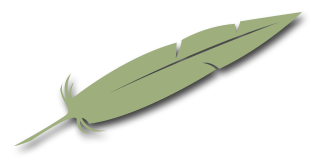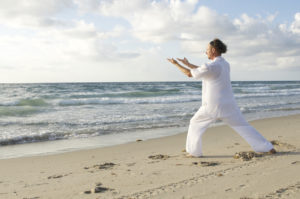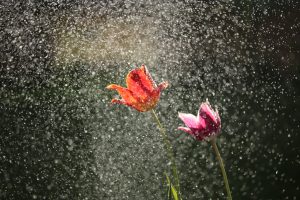- WE MOVED !!!
-
 Professional Acupuncture & Physical Therapy1118 East Superior Street
Professional Acupuncture & Physical Therapy1118 East Superior Street
Duluth, MN 55802(218) 724-3400 Clinic Hours
Mon8:00 am - 4:30 pmTue1:45 pm - 4:30 pmWed8:00 am - 4:30 pmThu8:00 am - 4:30 pmFriCLOSED

- Long Covid Booklet
Acupuncture
Joint Health & Traditional Chinese Medicine

Arthritis is one of the most common joint ailments, affecting over 54 million adults in the United States. Caused by a swelling of the joints, it can range from bothersome to extremely painful and can be a hindrance to everyday activities. Arthritis, along with other types of joint health issues, can be one of the most life-altering conditions to live with—because it can hinder everything from one’s ability to get regular exercise to how much someone can go to work.
Thankfully, applications of Traditional Chinese Medicine (TCM) and acupuncture can be amazingly helpful as arthritis treatments and general joint health maintenance protocol.
Within the theory of TCM and acupuncture, our essential life energy or qi (pronounced “chee”) flows along the meridians of the body. When the flow is constricted or imbalanced, we may experience illness or pain. The needles used in acupuncture are carefully placed along points connected to the meridians, stimulating those places to correct and encourage the flow of energy.
In TCM, the entire body is understood as a multifaceted mechanism whose parts function in concert—not silo-ed sections to be treated in isolation.
Various studies, including one by the Center for Integrative Medicine at the University of Maryland School of Medicine, found that patients felt significantly less pain and had an easier time walking after receiving legitimate acupuncture treatments.
Treating Rheumatoid Arthritis
There are many different types of arthritis, some with very few treatment options as dictated by Western Medicine.
Rheumatoid arthritis (RA) is one variety that can be hugely disruptive to sufferers’ lives. RA is a chronic systemic autoimmune disease that’s linked with progressive joint damage, resulting in severe chronic pain and long-term mobility issues.
Western medicine comes up short when trying to treat RA. Yet many clinical trials have shown that Traditional Chinese Medicine (TCM) has advantages in the treatment of RA.
Osteoarthritis & Preventing Knee Replacement
Another common and very detrimental type of arthritis is osteoarthritis, particular in the knee joints, and especially affecting older adults. When knee osteoarthritis gets severe enough, total knee replacement is the final treatment option.
A wide-ranging study of over 34,000 patients in Taiwan showed that TCM treatments reduced risk of total knee replacement in patients with knee osteoarthritis, and that enhanced benefits results from long-term treatment. The longer a patient used TCM, the less likely they were to need a knee replacement.
Sources:
NCBI Article
Medicine Article
Arthritis Foundation Article
Managing Arthritis Naturally

Arthritis can be one of the most life-altering and unpleasant common pain conditions. Caused by a swelling of the joints, it can range from bothersome to extremely painful and can be a hindrance to everyday activities. Arthritis is also associated with other chronic health conditions like heart disease, diabetes, obesity, and high blood pressure.
Over 54 million adults in the United States are affected by arthritis. That’s one in four adults! Interestingly, it is more common in rural areas. Arthritis is the number one cause of disability in the United States.
That means millions of people aren’t able to work or are limited in their ability to work, are missing out on life-enhancing activities and travel, and may be in near-constant pain due to arthritis.
Thankfully there are a multitude of ways to manage arthritis and the pain that so inhibits sufferers’ lives.
Acupuncture For Arthritis
When you consider that Traditional Chinese Medicine (or TCM) dates back over 3,000 years, it is easy to see the vastness of theory and history involved. This complementary medicine arms practitioners with a plethora of unique diagnostic tools. These tools include an ability to detect Qi imbalances, define the underlying problems and correct them.
Many clinical studies support acupunctures ability to be an effective treatment for arthritis. In addition to the increased production of endogenous opioid endorphins (the body’s natural pain-relieving chemicals), acupuncture is a great option to keep in mind to reduce swelling and increase range of motion safely, naturally and without harmful side effects.
Managing Arthritis
Move!
“Motion is lotion,” you may have heard a physical therapist, chiropractor, or acupuncturist say. Movement can help reduce arthritic swelling and pain, and is a sure-fire mood-booster that can also help manage those conditions that are common in conjunction with arthritis. It’s important that people suffering from arthritis choose low-impact exercise and only engage in physical activity that feel safe.
Reduce Stress
Stress has a big impact on the body’s ability to heal itself, especially when it comes to inflammatory conditions such as arthritis. The pain of arthritis can also contribute to stress, creating a vicious cycle.
Making sure you are taking care of your mental and emotional health by making self-care time, getting exercise and outdoor time, and having a mindfulness routine can all help manage daily stress.
The Mediterranean Diet
No diet can cure arthritis outright, but you have a full table of options when it comes to foods that can help fight inflammation and pain.
Often called the The Mediterranean Diet (because, well, it’s common in the Mediterranean regions!), a diet low in processed food and full of fruits, vegetables, fish, nuts and beans, and healthy oil can greatly reduce the symptoms of arthritis. Plus, it’s just good for you!
Research Update – The Benefits of Walking Barefoot
 Getting outside does the body good. There are scores of scientific studies that confirm just how good! But “earthing” takes a walk outside to another, deeper, more healing level.
Getting outside does the body good. There are scores of scientific studies that confirm just how good! But “earthing” takes a walk outside to another, deeper, more healing level.
What Is Earthing?
Also called “grounding,” earthing simply means walking barefoot on a natural surface like grass, soil, or sand. It’s important to remember that it is different than just walking outside, although that, too, is beneficial in so many ways. Making direct physical contact with the ground—and that doesn’t mean concrete or other man-made surfaces—is what it’s all about.
The prominence of the element carbon is what designates something as organic matter—and I don’t mean “organic” like your groceries! All living things are carbon-based. If you do any gardening or backyard composting, you’ll probably recognize that term, “carbon-based,” as the “green” stuff you put in your compost: leaves, grass trimmings, veggie cast-offs.
Earthing is also different from forest bathing, or shinrin-yoku, which is the Japanese practice of fully immersing oneself in nature.
How Earthing Works in Your Body
There are so many studies that confirm how beneficial earthing is for our bodies and minds. A research review led by Gaétan Chevalier of multiple studies published in the Journal of Environmental and Public Health illustrates how earthing has been shown to reduce stress, support immunity, help moderate heart rate and glucose levels, and even help wounds heal faster.
While there is still a lot to learn about how connecting physically with Earth affects our bodies, research shows that it has a lot to do with electrons and electromagnetic charge. Walking barefoot on organic surfaces actually changes the electrical activity of our brain.
It can even produce “measurable differences in the concentrations of white blood cells, cytokines, and other molecules involved in the inflammatory response,” according to the review by Chevalier.
Amazingly, this presence of carbon seems to be what makes carbon-fiber mattresses so helpful for better sleep and pain relief!
According to a study in The Journal of Alternative and Complementary Medicine, earthing may even help improve the function of red blood cells, a major factor in heart disease. Another study shows that earthing may help regulate both the endocrine and nervous systems.
Earthing is an amazing addition to your wellness care routine, just like regular acupuncture visits. Let’s schedule you for a spring tune-up to make sure you’re as healthy as you can be!
Sources:
Earthing: Health Implications of Reconnecting the Human Body to the Earth’s Surface Electrons, Gaétan Chevalier, Stephen T. Sinatra, James L. Oschman, Karol Sokal, Pawel Sokal
The effects of grounding (earthing) on inflammation, the immune response, wound healing, and prevention and treatment of chronic inflammatory and autoimmune diseases, James L Oschman, Gaétan Chevalier, and Richard Brown
Earthing the Human Body Influences Physiologic Processes, Karol Sokal, MD, PhD, and Pawel Sokal, MD, PhD
Acupuncture for Tension Headaches

Many research studies are proving acupuncture can help ease symptoms associated with chronic tension headaches. One of these studies published by the Cochrane Library concluded a course of six acupuncture treatments can be a viable option in the treatment of “tension-type headaches”. According to the study, participants treated with acupuncture and pain-killers reported their headache frequency was less. This study was actually a compilation of several acupuncture trials. A total of 12 trials met the criteria to be included in this conclusive study. Acupuncture was also compared to several other modalities such as massage and physiotherapy, but the findings were inconclusive.
Tension headaches are not as debilitating as migraines but often occur more frequently. Tension headaches are reported to be the most common type of headache experienced. Stress tends to be the biggest factor regarding these types of headaches. Those who suffer from tension headaches frequently report a feeling of their head being squeezed, with pressure around the forehead, temples, and back of the head or neck. Tension headaches can last for as short as 30 minutes or they could linger for days.
While the exact cause of tension headaches is still not clear, they are most commonly attributed to muscle tension or spasms of the head, face, scalp, or jaw. Tension headaches are considered chronic if a person experiences them 15 or more days per month for several months. The most common treatment for tension headaches is over-the-counter medications like ibuprofen or aspirin. Severe cases are sometimes treated with prescription drugs, but they tend to fail because they do not address the root cause of the headaches.
Traditional Chinese Medicine is known for locating and treating the root cause of any ailment, including tension headaches. One of the ways TCM treats the root is by identifying personal triggers that create tension-type headaches. The licensed acupuncturist plays the role of a detective when treating patients. Acupuncturists usually ask multiple questions regarding the symptoms of any illness, including tension-type headaches. This allows for proper diagnosis and treatments. This can also give the patient insight into why the headaches keep occurring and how they can eliminate some of the triggers.
TCM includes more than just acupuncture. Herbal formulas, accessory modalities such as cupping or tuina, and even relaxation techniques such as deep breathing, meditation, or qi gong are a part of TCM. Acupuncture itself provides headache relief with a great deal of success. As few as one or two needles can be sufficient in stopping tension-type headaches. Acupuncture is also very effective at providing relief from stress and anxiety, two of the most common triggers of tension-type headaches. By adding in herbs and accessory modalities, the patient then has the tools needed to counter oncoming headaches on a long-term basis. The acupuncture treatments then become a type of maintenance to keep the headaches at bay.
A person suffering from tension-type headaches could benefit greatly from regular acupuncture treatments. If you are one of the nearly 1.4 billion people that suffer regularly from tension-type headaches, give me a call today at (218) 724-3400, acupuncture and TCM CAN HELP!
How Nature Supports Our Wellness
 Spring is an amazing time to reconnect with the natural world. Did you know that being in and around nature actually improves our physical, mental, and emotional health?
Spring is an amazing time to reconnect with the natural world. Did you know that being in and around nature actually improves our physical, mental, and emotional health?
Just in time for Earth Day on April 22, it’s time to commit to immersing yourself more regularly and deeply in nature.
Bring some nature indoors.
Did you know that adding houseplants to your space can actually make you healthier and happier?
Research shows that having plants indoors supports our health and wellness both physically and emotionally/mentally. They can improve mood, reduce stress levels, enhance memory and cognitive function, and developing research even shows that they improve indoor air quality.
Physically, houseplants have been shown to reduce blood pressure, fatigue, and headaches and other types of pain. Nowadays, thanks to this research, hospitals often put houseplants into patients’ rooms after surgery to help reduce pain and speed up physical healing.
Look out the window at some greenery.
It’s that simple! During the day, when you’re stuck inside, just gazing out a window at nature helps reduce stress, increase focus, and improve eye health. Studies show that not only is gazing at far-distance objects helpful, but also that the color green is particularly soothing for our eyes and brain.
It’s essential for eye and brain health to look at a variety of distances throughout our day, but our modern lives have us gazing at close-range objects almost all day! And the fact that these close-range objects are electronic screens makes for even worse eye/brain health.
Throughout your day, set an alarm for once every hour, and take 2-3 minutes to gaze out the window at trees or even grass. Soften your gaze and let your eyes relax.
Try forest bathing.
Forest Bathing or shinrin-yoku is the Japanese practice of taking walks surrounded by and fully immersed in nature. It does wonders for our nervous system.
The nervous system benefits of being in nature are immense. Even low-impact exercise like a walk or mellow hike releases endorphins that increase happiness and help soothe depression and stress. Physically, immersing ourselves in nature can reduce cancer risk, improve heart health, and so much more.
Schedule some time for Forest Bathing. Be sure to unplug from technology—either leave your phone at home or turn it on airplane mode. Try to find a location that is free from car noise and fumes. Move slowly, observe your surroundings with all your senses, and breath deeply. Forest Bathing is meant to be quiet, slow, and meditative.
Traditional Chinese Medicine and Nature
Traditional Chinese Medicine and all of its branches, including acupuncture, are deeply related to the natural world. This medicine, after all, was developed in ancient times, before modern technology and industrial lifestyles that divided humans from nature and all its healing properties.
TCM’s goal is to create harmony and balance in the body by enhancing our natural defences. Ready to use natural methods and boost your body’s own defense systems to help get and stay healthy? Contact us today to schedule a visit.
